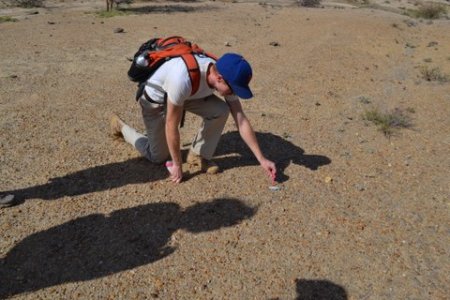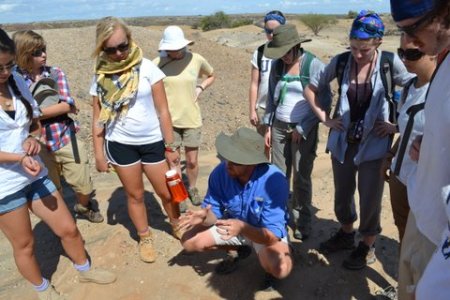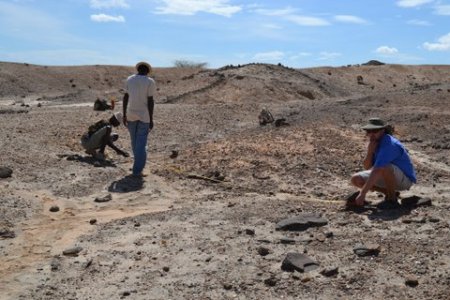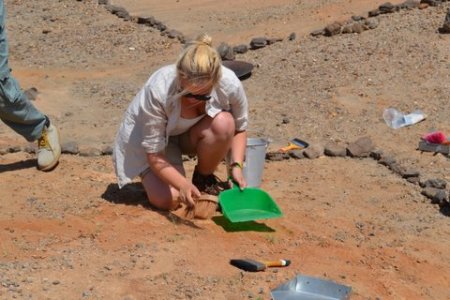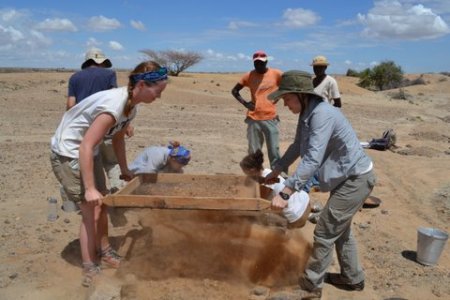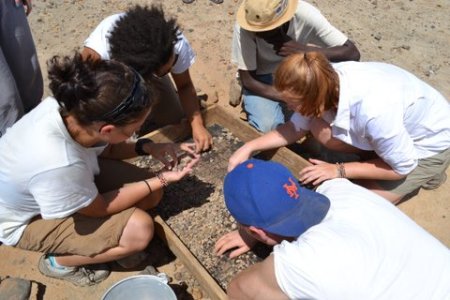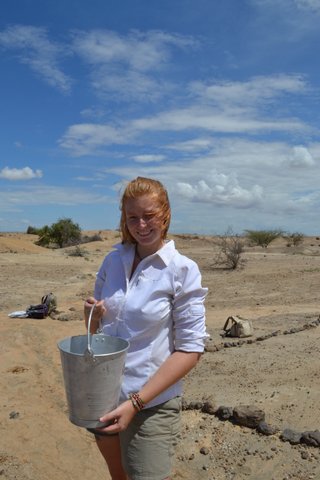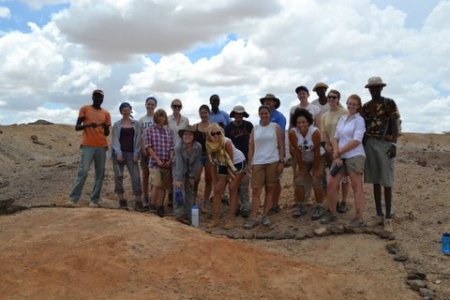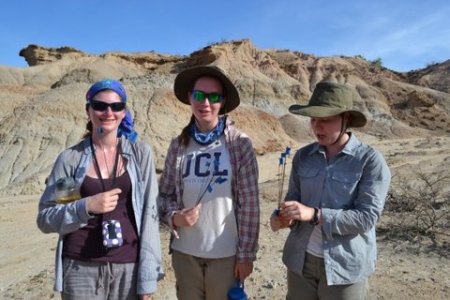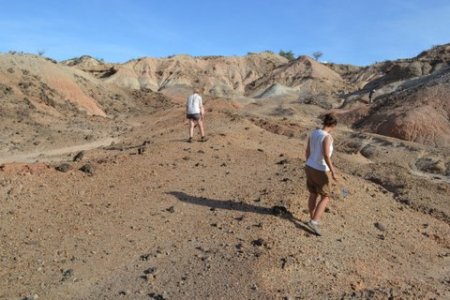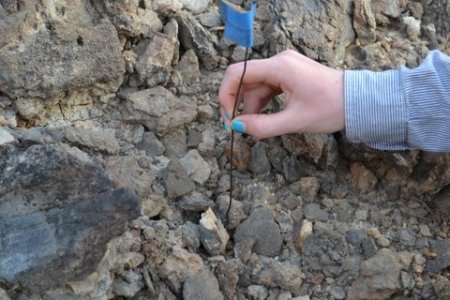Hi, we’re Katie and Letty and we’re students from UCL. On Thursday, we went on a trip to South Turkwel and some deposits nearer the TBI compound to learn about surveying and excavation techniques used in Paleoanthropology. Currently we are taking a course on Human Evolution led by Dr. Jason Lewis.
In the morning, we took a short truck journey to the South Turkwel deposits where we learnt about surveying techniques and began to flag some fossils we spotted on the surface.

